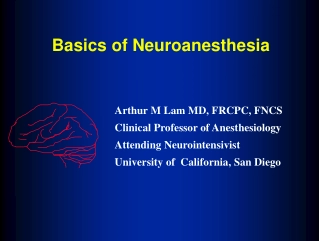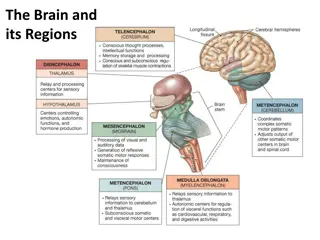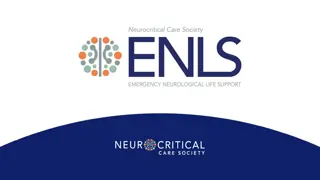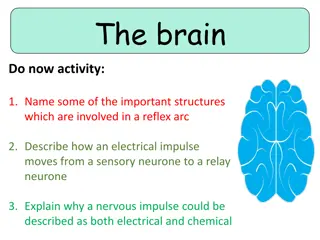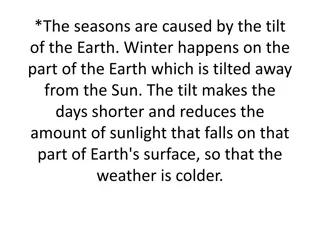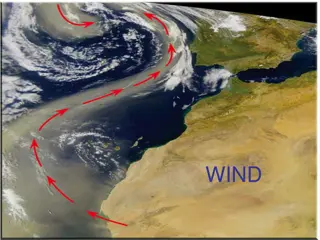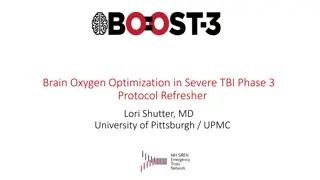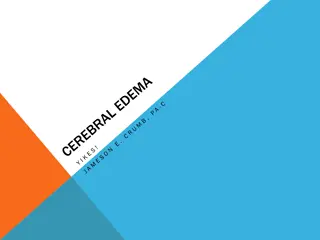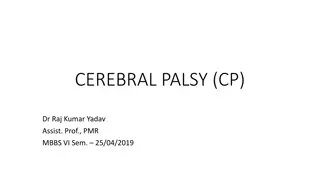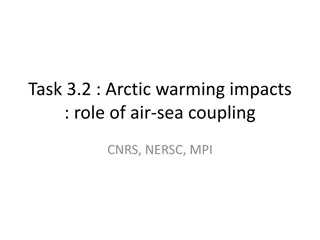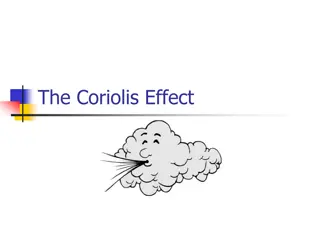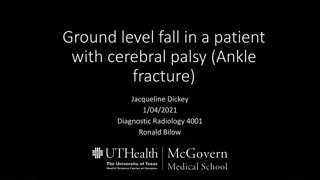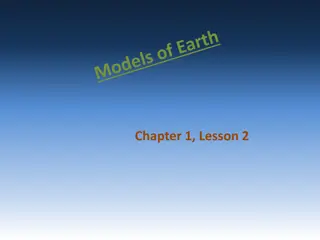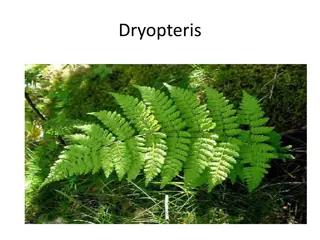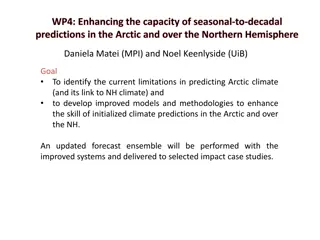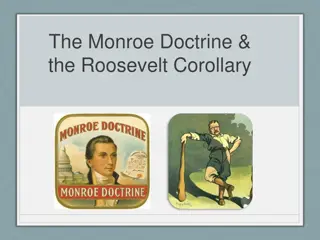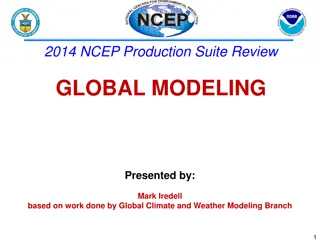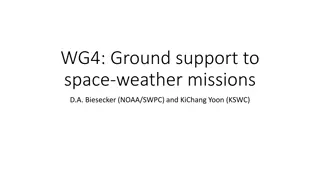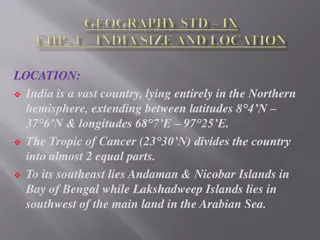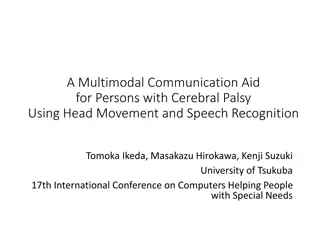Basics of Neuroanesthesia
The intricate mechanisms involved in regulating cerebral blood flow during neuroanesthesia, including factors like pressure autoregulation, metabolic control, and the influence of inhaled agents. Discover the critical interplay between flow and metabolism coupling in maintaining optimal brain perfus
0 views • 44 slides
Understanding Neurogenic Speech and Language Disorders in Adults
This chapter provides insight into language disorders in adults, including types of aphasia, causes such as toxins, traumatic brain injury, brain tumors, and strokes. It discusses cerebral hemorrhage, occlusive strokes, ischemic stroke, transient ischemic attacks, and cerebral thrombosis. The conten
1 views • 34 slides
Explore the Fascinating World of the Brain and its Functions
Delve into the intricate structures and functions of the brain, from its regions to the cerebral lobes. Learn about the roles of the left and right hemispheres, essential sensory and motor areas, and the cerebral nuclei. Discover how the brain enables us to be conscious, control movements, and proce
4 views • 27 slides
Understanding Neuropsychological Assessment: Insights and Applications
Neuropsychological assessment plays a vital role in understanding brain-behavior relationships. This process involves determining cerebral functioning, identifying dysfunction, and assessing cognitive abilities through a combination of interviews, observational data, and testing. The assessment aids
3 views • 33 slides
Understanding Basic CT Perfusion Terms in Stroke Imaging
This educational content delves into fundamental concepts related to CT perfusion imaging in stroke evaluation. It covers key terms such as core infarct, penumbra, Time to Peak, Mean Transit Time, Cerebral Blood Volume, and more. The information includes definitions, descriptions, and the significan
6 views • 16 slides
Airway Management in Neurological Patients: ENLS Version 5.0
Explore the essentials of airway, ventilation, and sedation in neurological patients through the ENLS Version 5.0 content. Understand the challenges and goals of managing airways in critical situations such as trauma or respiratory distress. Learn about common indications for intubation and the impo
0 views • 37 slides
Explore the Structures and Functions of the Brain
Delve into the intricate world of the brain, learning about important structures like the hypothalamus and cerebral cortex. Discover how electrical impulses move through neurons and understand the dual nature of nervous impulses. Engage in activities to map brain functions and test your knowledge wi
1 views • 23 slides
Explaining the Earth's Tilt and Seasonal Changes
The Earth's tilt causes seasonal changes, leading to winter in the hemisphere tilted away from the Sun, resulting in colder weather due to reduced sunlight. Understanding the tilt helps explain why seasons vary across different parts of the same hemisphere, impacting temperatures and daylight length
1 views • 10 slides
Impact of Human Population Growth on Environment and Welfare
The rapid growth of the human population is placing immense pressure on the environment, leading to increased demand for resources like food, water, and shelter. The effects of human activity on the environment have escalated significantly over the years due to population expansion. High birth rates
0 views • 8 slides
Understanding Ergotherapy in Cerebral Palsy Rehabilitation
Explore the role of ergotherapy in the rehabilitation of children with cerebral palsy, emphasizing the importance of early habilitation, continuous learning, and support strategies for individuals and families. Discover the challenges faced by parents and caregivers, the necessity for acceptance, an
1 views • 15 slides
Association of Renal and Cerebral Near-Infrared Spectroscopy with Adverse Outcomes in Single Ventricle Patients after Stage I Palliation
Study investigates the association between renal and cerebral near-infrared spectroscopy (NIRS) values and low cardiac output syndrome in single ventricle patients post Stage I palliation. Data from infants who underwent surgery between 2010-2019 is analyzed to determine correlations with adverse ou
0 views • 13 slides
The Monroe Doctrine: A Declaration of American Independence
The Monroe Doctrine asserts that the American continents are not to be colonized by European powers and considers attempts to extend European systems into the hemisphere as dangerous. The United States declares its non-interference with existing European colonies or dependencies.
0 views • 8 slides
Forces Affecting Air Movement: Pressure Gradient Force and Coriolis Force
The pressure gradient force (PGF) causes air to move from high pressure to low pressure, with characteristics including direction from high to low, perpendicular to isobars, and strength proportional to isobar spacing. The Coriolis force influences wind direction due to the Earth's rotation, making
0 views • 20 slides
Understanding the Structure and Function of the Cerebrum
Dive into the intricate details of the cerebrum, the largest part of the forebrain. Explore its parts including the cortex, medulla, basal ganglia, and lateral ventricle. Learn about the lobes, important sulci, and gyri. Understand the types of fibers in the cerebral medulla and their functions. Unr
1 views • 20 slides
Brain Oxygen Optimization in Severe TBI - Protocol Summary
In the severe traumatic brain injury (TBI) protocol, intracranial monitors measuring ICP and PbtO2 are placed within 12 hours of injury. Procedures include FiO2 challenges to check PbtO2 reliability and assess cerebral physiology. Challenges involving FiO2, MAP, and CO2 help guide ventilator setting
2 views • 27 slides
Understanding Cerebral Edema: Causes, Treatments, and Pathophysiology
Cerebral edema is a life-threatening condition that can result from various factors such as trauma, infarction, hemorrhages, or tumors. This condition can lead to increased morbidity and mortality due to hemorrhage or herniation. New advances in understanding the pathophysiology of cerebral edema ha
1 views • 28 slides
Understanding Cerebral Palsy: Causes, Risk Factors, and Pathology
Cerebral Palsy (CP) is a clinical syndrome characterized by motor dysfunction and non-progressive brain damage affecting an immature developing brain. This article explores the definition, risk factors during prenatal, natal, and postnatal periods, and the pathology associated with CP, including dif
1 views • 38 slides
Association of Renal and Cerebral Near Infrared Spectroscopy with Low Cardiac Output in Single Ventricle Patients
Near-infrared spectroscopy (NIRS) has been studied in infants after Stage I palliation surgery to assess its association with low cardiac output and adverse outcomes. This retrospective study investigated postoperative cerebral and renal NIRS values in infants with single ventricle physiology. Resul
0 views • 13 slides
The Flag of Australia
he Flag of Australia features the Union Jack, symbolizing British heritage, and the Southern Cross constellation, representing Australia's location in the Southern Hemisphere.\n\/\/flagsworld.org\/flags-australia-oceania.html
0 views • 12 slides
Latin American Revolutions: Causes, Events, and Impact
Latin American Revolutions from 1791 to 1825 marked a period of significant upheaval as colonies in the Western Hemisphere sought independence from Spanish rule. Driven by factors like inspired by other successful revolutions, Spanish mercantilist policies, and unequal wealth distribution, these rev
1 views • 12 slides
Exploring Dark Matter in Southern Hemisphere with PAUL Project - A Scientific Journey
Join the PAUL project team as they delve into the search for dark matter in the Southern Hemisphere at L'Aquila, Italy. Discover operational underground labs, historical milestones, new developments, and future projects in South Africa. Explore the collaboration with world-class universities and the
0 views • 25 slides
Understanding Earth's Seasons and Moon Phases
Explore the primary causes of Earth's seasons, the positioning of winter in the Northern Hemisphere, and the eight phases of the lunar cycle. Learn about the characteristics of the moon in its waxing and waning phases, the time it takes to transition between moon phases, and the role of the sun in t
0 views • 24 slides
Understanding the Impact of Arctic Warming Through Air-Sea Coupling
Investigate the role of air-sea coupling in amplifying or dampening the impact of Arctic warming on northern continents using coordinated coupled model experiments. Explore the mechanisms bridging Arctic impacts in the Northern Hemisphere via North Pacific sea surface temperature changes. Focus on t
4 views • 15 slides
Unraveling Geography: Discovering the Arctic and New Zealand
Dive into the fascinating worlds of the Arctic and New Zealand through engaging lessons and quizzes. Explore the northernmost point on Earth, the Arctic's unique wildlife, and the beauty of New Zealand's islands in the Southern Hemisphere.
1 views • 13 slides
Understanding Akabane Disease: Causes, Symptoms, and Prevention
Akabane disease, also known as Enzootic Bovine Arthrogryposis and Hydranencephaly, is a viral illness transmitted by arthropods that primarily affects calves, lambs, and kids. The disease can lead to congenital abnormalities such as joint immobility and absence of the cerebral hemisphere. It is caus
2 views • 19 slides
Discover Australia: Quick Facts and Highlights
Explore interesting quick facts about Australia, from its 18th-century history to iconic landmarks like Canberra and Anzac Day. Learn about its diverse geography, with the continent's highest mountain, bustling cities, and unique wildlife. Delve into the significance of Anzac Day, James Cook's explo
0 views • 33 slides
Understanding Global Wind Patterns and the Coriolis Effect
Air pressure differences cause winds, with the Coriolis Effect causing wind paths to curve as air moves from high to low pressure areas. In the Northern Hemisphere, winds curve to the right, and in the Southern Hemisphere, they curve to the left. Planetary and local winds are influenced by temperatu
0 views • 14 slides
Ankle Fracture in a Patient with Cerebral Palsy: Diagnostic Radiology Case Study
A 57-year-old male with a history of cerebral palsy presented with ankle pain following a ground level fall. Examination revealed a Danis-Weber type B3 fracture subluxation and a displaced age-indeterminant fracture of the talar neck with midfoot collapse. Key imaging findings included soft tissue s
0 views • 15 slides
Understanding Map Concepts: An Overview
Exploring essential map-related terms and concepts such as map projection, hemisphere, latitude, longitude, scale, equator, prime meridian, map symbol, and globe. Enhance your understanding of how maps represent Earth's surface and the key elements involved in cartography.
0 views • 14 slides
Understanding Earth's Geography: A Visual Presentation for Grades IV & V
Explore the wonders of the Earth with this engaging visual presentation designed for grades IV & V. Learn about globes, continents, oceans, important latitudes, longitudes, and key features of the Earth's surface. Discover the North Pole, South Pole, Equator, Northern Hemisphere, Southern Hemisphere
0 views • 14 slides
Understanding Dryopteris Fern Life Cycle
Dryopteris, commonly known as wood fern or male fern, is a genus of ferns with around 250 species primarily found in the temperate Northern Hemisphere. These ferns have distinct characteristics like creeping rootstocks, fronds with sori, and triangular-shaped leaves with fiddlehead sprouts. The spor
0 views • 17 slides
Simulation of Stratospheric Temperature by GFDL Models: Observations and Trends
Interannual variations of stratospheric temperature since 1979 are well simulated by GFDL models, showing general cooling trends, stronger cooling over Southern Hemisphere high latitudes, post-eruption warming, delayed cooling after eruptions, and flat trends in the 2000s. However, models tend to ov
0 views • 10 slides
Enhancing Seasonal-to-Decadal Predictions in the Arctic
Daniela Matei from MPI and Noel Keenlyside from UiB aim to improve Arctic climate predictions and their connection to the Northern Hemisphere. They plan to enhance models and methodologies, assess baseline predictions, conduct coordinated experiments, explore innovative techniques for predictive ski
0 views • 6 slides
The Monroe Doctrine and the Roosevelt Corollary: Evolution of US Foreign Policy
The content explores the historical context and evolution of US foreign policy through the Monroe Doctrine of 1823 and the Roosevelt Corollary of 1904. It discusses the principles outlined in each doctrine, their implications on US interactions with other nations in the Western Hemisphere, and the s
0 views • 4 slides
Overview of 2014 NCEP Production Suite Review on Global Modeling
The 2014 NCEP Production Suite Review highlighted the significant implementation of the 13 km Global Forecast System (GFS). This major update involved substantial enhancements in resolution, observations, analysis, and physics, impacting various NCEP models and centers. The improved 13 km GFS brough
0 views • 20 slides
Ground Support to Space Weather Missions Overview
This discussion covers ground support for space weather missions, focusing on existing RTSW and Beacon networks such as ACE and DSCOVR. The Real-Time Solar Wind Network, established in 1998, facilitates real-time solar wind data transmission, with partners including NOAA, DLR, and KSWC. The network'
0 views • 15 slides
Geography and Boundaries of India
India, a vast country in the Northern hemisphere, is divided by the Tropic of Cancer into two almost equal parts. With an area of 3.28 million sq kms, it has a strategic central location connecting West Asia, Africa, Europe, and East Asia. India's landmass, with its diverse terrain and long coastlin
0 views • 7 slides
The Turning Point: Gettysburg and Vicksburg in the Civil War
President Lincoln issues the Emancipation Proclamation after the Battle of Antietam, setting the stage for significant events in the Civil War. The Union faces leadership changes and Confederate advances, leading to the pivotal Battle of Gettysburg in June 1863. The battle becomes the largest ever f
0 views • 12 slides
Assistive Communication System for Individuals with Cerebral Palsy Using Head Movement and Speech Recognition
Development of a multimodal communication aid system for individuals with cerebral palsy, addressing challenges such as dysarthria and involuntary movements. The system allows users to communicate through head movements and speech recognition, reducing the reliance on caregivers and minimizing disru
0 views • 15 slides
Exploring South Korea: Land of Harmony and Natural Beauty
South Korea, known for its flag symbolizing peace and harmony, is home to Seoul, the bustling capital with a population of 10 million. Situated in the Eastern Hemisphere, South Korea faces natural hazards like typhoons, floods, and earthquakes. The country boasts a diverse landscape with mountains,
0 views • 17 slides
